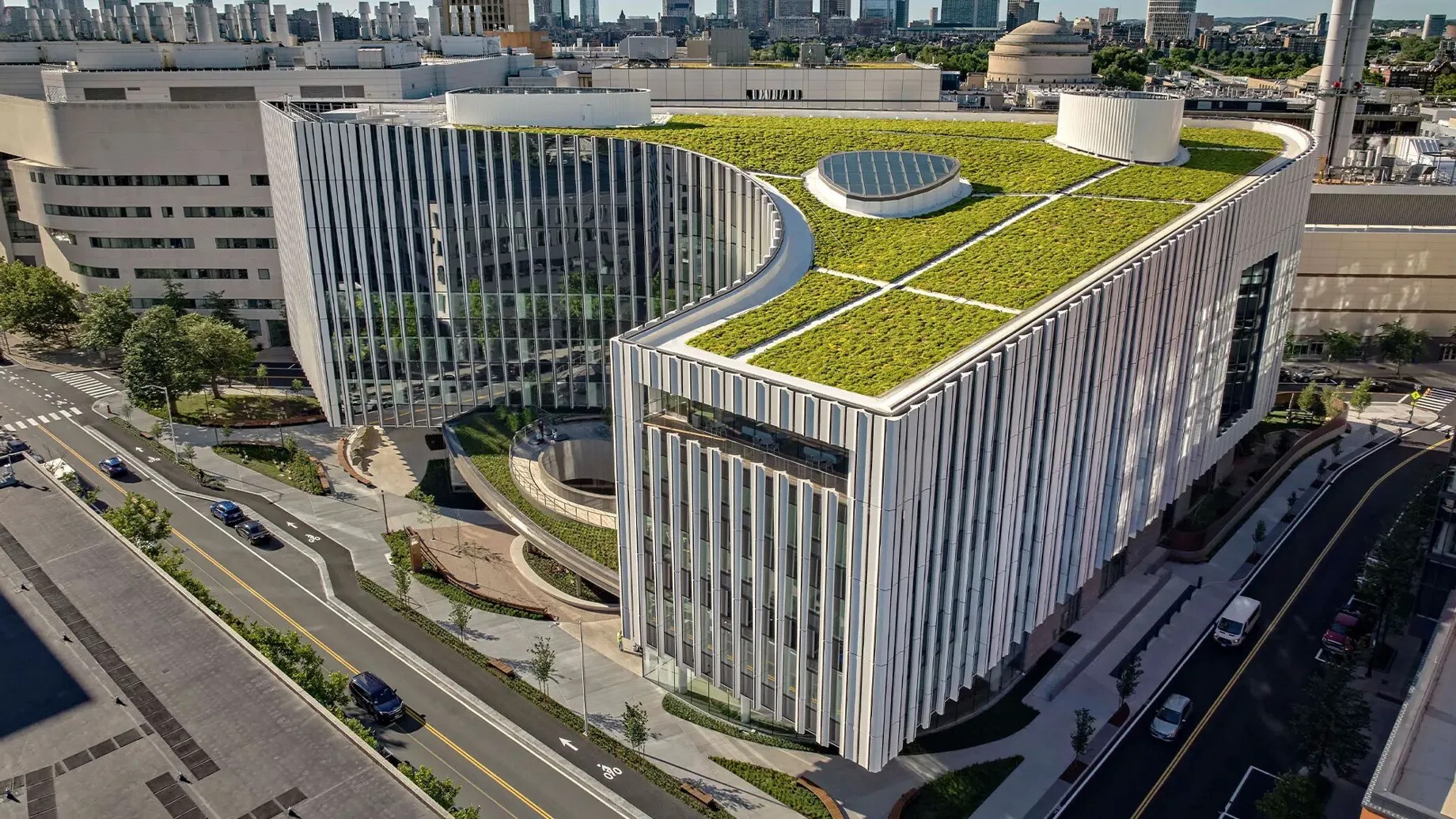

In the heart of Kendall Square, a Boston neighbourhood known for its practical and distinctive architectural features, the new Ragon Institute medical centre has been built. Designed by acclaimed architecture firm Payette, the building makes a bold statement with its use of aluminium, not just for looks, but for function too. Its most striking feature is not the glass or structure, but a delicate layer of tapered aluminium fins that add visual interest, improve performance and quietly reflect a growing focus on aluminium’s sustainable future.

Aluminium’s evolution: from industry to ideation
More than a functional and utilitarian metal, aluminium in 2025 symbolises something more. With industries navigating the challenges of decarbonisation and circular design principles, aluminium is once again elevated to a prominent position in architecture, not just for its strength-to-weight ratio but also for its recyclability and versatile formability. The fins found in this project (which were powder-coated and profiled appropriately) charitably represent the stone texture and shadowing without the associated structural foreboding.
“The lightweight, malleable aluminium fins give the illusion of limestone where actual stone would require additional support," the design narrative reads.
The fins, produced in POHL, a firm that specialises in the development and production of custom-made façade solutions and is a part of a unitised curtain wall system, do not merely serve as decorative elements of a façade. The fins filter daylight, conceal mechanical systems and perform thermally; a meeting point of aesthetics and engineering, reflecting aluminium's evolving place in energy-efficient buildings.
Parametrics, performance, and programme-driven form
But the innovation did not end with the material selection. The spacing and shape of the fins were determined using parametric modelling, solar studies, and physical prototyping. This approach is becoming typical in envelope design but is rarely used with such craftsmanship. From eight different fin types to the oval curves of the broader profiles, the variation creates a "shifting sense of enclosure," in which building may or may not be treated as either solid or transparent, depending on the viewer's angle of observation.
Michael Hinchcliffe, Payette principal, encapsulates the intent, “The massing is driven by a synthesis of program, performance, and site concept. Addressing distinct urban conditions, the sweeping form transitions in scale, rising gradually from an adjacent residential community to a larger institutional context.”
Aluminium as an architectural medium
Though aluminium fins are conventionally associated with heat exchange systems, their architectural adaptation here highlights a larger trend: being expressively sustainable with industrial materials. Their contribution to energy performance, daylight modulation, and visual interest solidifies aluminium's place as not just background material, but a central design actor.
In Payette's hands, aluminium is not just functional; it is poetic.
Responses








